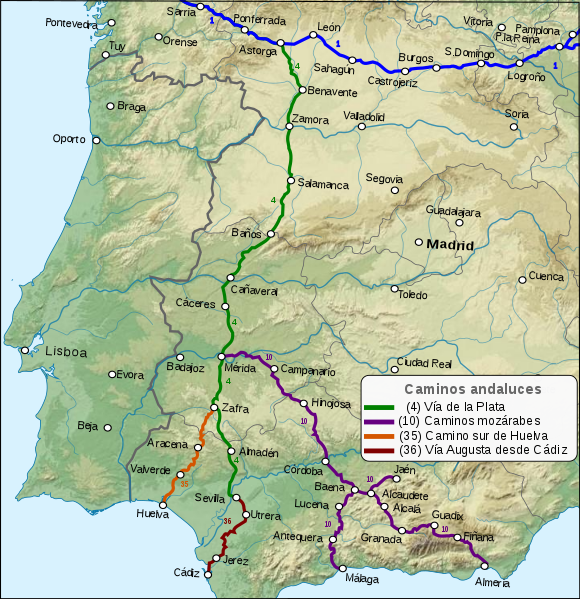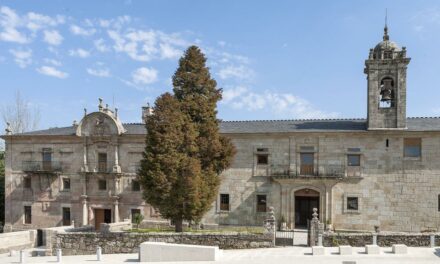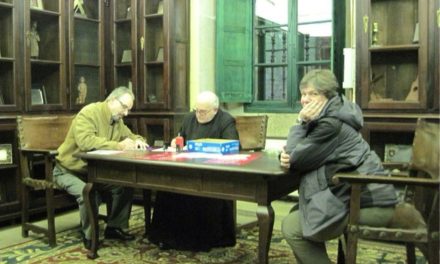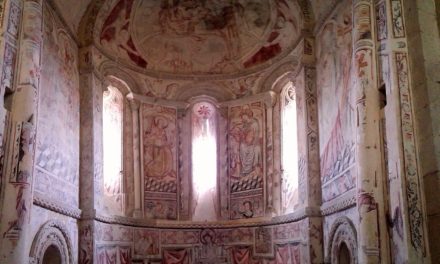The Vía de la Plata is, among all the itineraries or routes of the Camino de Santiago, the most intimately linked to a Roman road.
The original road, like so many communication routes, would have been created based on natural passage ways – wading across rivers, avoiding mountains or difficult stretches – together with the cultural, social and economic needs of the time.
The layout of this magnificent engineering work thanks to the Romans responded largely to the transportation and supply needs between Augusta Emerita (Mérida) and Asturica (Astorga).
Nor in its origin would it be a unique route, but a set that constituted the vertical axis of communications in the west of the Iberian Peninsula, present in the best-known guide of Roman roads: the Antonine Itinerary.
Only belatedly, in the Renaissance, it became known under the name of Vía de la Plata (The Silver Way). Thanks to the researchers, we now know that the noun “silver” did not refer to the metal in the strict sense of the word, nor did it refer to the fact that the route was dedicated in origin to its commerce or transport, but it seems to be the result of an error from a bad translations from the Andalusian era.
This great route or group of routes remained in use during the Middle Ages, becoming a way of passage for most pilgrims who went to Santiago from the south. Currently many of these pilgrimage itineraries have been recovered, they are ways that coincide with a large part or with fragments of the old road and its Roman landmarks. Although there are also sections, variants and medieval deviations that were added according to the needs of the epoch and, certainly, religious devotion.
The imprint that religion and religious devotions leave on roads and ways is not a minor aspect. For a way to be converted or re-used as a pilgrimage route, it means that detours and visits to other sanctuaries are included, that the itinerary becomes a succession of small pilgrimages to places of worship, thus, a Visitandum est as Codex Calixtinus refers to it.
Currently, the Vía de la Plata is used as a pilgrimage way to Santiago, it is therefore an ancient Roman road recovered mainly in relation to a later function. This pilgrimage way also has many variants and links with other ways to Compostela.
The main axis, the central one and traditionally known as de la Plata, would be the one formed by the landmarks, villas and villages between Mérida and Astorga, this town being the point of arrival and connection with the great artery of the pilgrimage to Santiago or the French Way. But, as we said, to this central axis, which fundamentally crosses the lands of Extremadura and Castilla-León, numerous sections and roads from the south of Andalusia and Portugal have been added.
The Andalusian section has an indisputable historical importance, appearing partly in the aforementioned Antonine Itinerary and linked to the importance of river transport and communication in Roman times. In Andalusia there would have been an important communication network between its two great rivers, the Guadalquivir and the Guadiana, in which the importance of the city of Seville, the starting point or main connection between Andalusia and Mérida, would have its origin. Thus, the extension of the Vía de la Plata to Seville, would already have been a reality in Roman times.
Beyond Seville, there are also other itineraries that link to other cities and provinces of Andalusia with the Via de la Plata. Most of them also ancient ways, that today – thanks to the public institutions and the Associations of Friends of the Camino de Santiago – are being investigated, marked and valued as Caminos Mozárabes, Via Augusta, etc.
In Zamora -halfway between Mérida and Astorga- other itineraries are also created that lead to Compostela through the province of Ourense. There are other itineraries more linked to the ways and pilgrims from Portugal, among which is the one known as the Camino Mozárabe or Sanabrés, which, through the Portuguese lands of Tras-os-Montes, goes to Chaves or directly to Verín, already in Galicia , reaching the city of Santiago through the province of Ourense.
Photo: We have taken this image of the Commons Wikipedia project, its author is Paulusburg.











